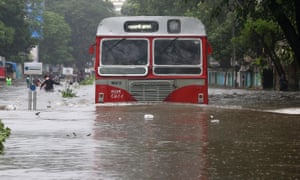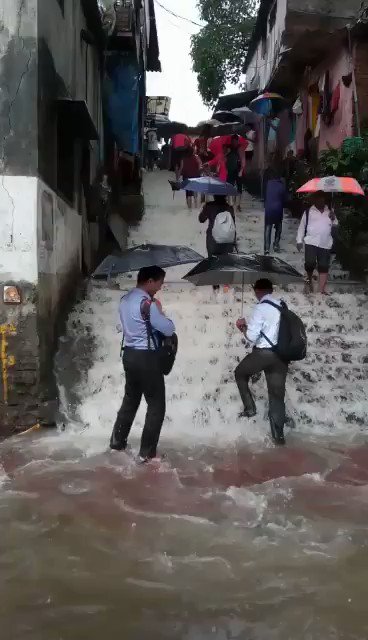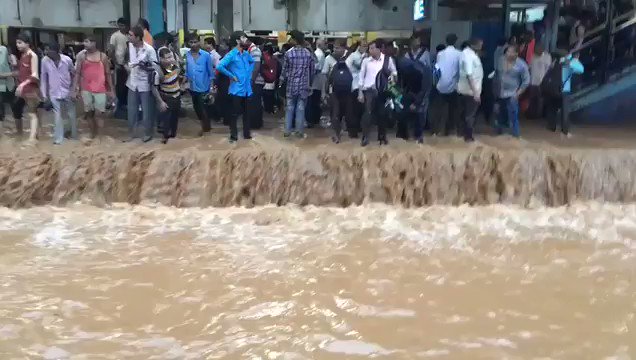Heavy monsoon rains have brought India’s financial capital to a halt, with authorities struggling to evacuate people with the scheduled high tide adding to the chaos.
Incessant rain flooded several parts of Mumbai on Tuesday and paralysed train services used by millions of commuters daily, with many stranded at stations and hundreds of others walking home through waist-deep water on railway tracks.
Poor visibility and flooding also forced airport authorities to divert some flights while most were delayed by up to an hour.
Thousands, some abandoning their water-logged cars, waded through waist-deep water to reach home after some parts of the city received as much as 297.6mm (11.72in) of rainfall. Children were sent home early from school.
Weather officials are forecasting heavy rains to continue over the next 24 hours and have urged people to stay indoors. A high tide at 1105 GMT amid the downpour led to water logging of up to 5ft in some parts of the city.
Floods have killed more than 1,000 people in India, Nepal and Bangladesh in recent weeks and forced millions from their homes in the region’s worst monsoon disaster in recent years.
The National Disaster Response Force launched a rescue mission with police to evacuate people from low-lying areas but operations were thwarted by the continuous rain.
“The heavy rains, flooding, are delaying our rescue work. Even we are stranded,” said Amitesh Kumar, joint commissioner of police.
Images and video posted on social media showed the extent of the flooding.
Rainwater flooded the King Edward Memorial Hospital in central Mumbai, forcing doctors to vacate the paediatric ward.
“We are worried about infections … the rain water is circulating rubbish that is now entering parts of the emergency ward,” said Ashutosh Desai, a doctor in the 1,800-bed hospital.
Although Mumbai is trying to build itself into a global financial hub, parts struggle to cope during annual monsoon rains.
Floods in 2005 killed more than 500 people in the city. The majority of deaths occurred in shanty town slums, which are home to more than half of Mumbai’s population.
The meteorological department warned that the Mumbai rains would continue for the next 24 hours.
Unabated construction on floodplains and coastal areas, as well as storm-water drains and waterways clogged by plastic garbage, has made the city increasingly vulnerable to storms.
Snehal Tagade, a senior official in Mumbai’s distaster management unit, said they were deploying 150 teams to help the population in low-lying residential areas.
Low-lying parts of the city with a population of more than 20 million people witnesses flooding almost every year but large-scale flooding of this magnitude hasn’t been witnessed in recent years.
“We are mapping all the flooding zones to launch a project to build emergency shelters to make evacuation easy,” said Tagade.
Many businesses asked employees to leave early in expectation of worsening traffic jams. Rains and a high tide in the western coastal city threaten to overload an ageing drainage system.
Several companies have also arranged for food and resting facilities for employees who have been stuck in office. Temples and other Ganesh pandals have been offering those stranded on streets food and water.
Social media also has been abuzz with people offering help to strangers who have been stuck at various locations in the city.
The education minister has asked all schools and colleges in the city to remain shut on Wednesday.
The flooding lead to some power outtages in parts of the city with the municipal corporation warning of more such cuts if water levels continued to rise.
A spokeswoman for the Mumbai International Airport said flights in and out of Mumbai airport, India’s second busiest, were delayed while some had to be diverted.








No comments:
Post a Comment